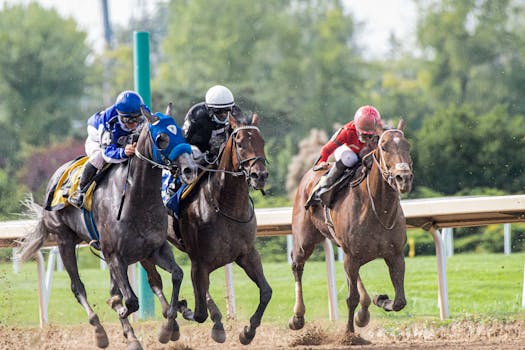Irish grand national runners

Ireland is home to some of the most popular racecourses and tracks in the world, with millions tuning in to watch events every year. Here’s a brief look at some of Ireland’s most legendary racecourses and major events, as well as a general overview of the history of horse racing in Ireland.
Legendary racecourses in Ireland
Ireland is home to some of the most famous and iconic racecourses in the world. The most popular ones include Leopardstown Racecourse, Fairyhouse Racecourse, Punchestown Racecourse, Galway Races and Curragh Racecourse.
- Leopardstown is located just outside Dublin and hosts a variety of flat and National Hunt races throughout the year.
- Fairyhouse is located in County Meath and hosts both flat racing and steeplechase events.
- Punchestown is located in County Kildare and hosts some of the biggest jump racing events in Europe.
- Galway Races takes place over seven days every summer at Ballybrit Racecourse in County Galway.
- Curragh Racecourse is one of the oldest racecourses in Ireland, hosting both flat racing and National Hunt events since 1727.
Major races and events on the Irish racing calendar
The Irish racing calendar is packed with major races and events throughout the year. One of the most popular events is the Irish Grand National, which takes place at Fairyhouse Racecourse in April. This event features a 3-mile steeplechase race with 24 fences for horses aged five years or older. If you’re interested, you can always check out the Irish grand national runners ahead of time to learn about the competitors as well as betting odds.
Another major event on the Irish racing calendar is the Punchestown Festival, which takes place in late April or early May every year. This festival includes five days of world-class horse racing action, featuring some of Ireland’s best horses and jockeys competing for big prizes. Other notable races include the Galway Plate, held at Ballybrit Racecourse in July, and the Irish Derby, held at The Curragh Racecourse in June.
The history of Irish horse racing
Horse racing has been a part of Irish culture for centuries. The first recorded race in Ireland took place in 1613 when King James granted permission for a race to be held at the Curragh Racecourse in County Kildare.
The first official race was held at the Curragh in 1752. It is still one of the most popular venues today. Over time, additional courses were established throughout Ireland, including Leopardstown Racecourse (1790), Fairyhouse Racecourse (1848) and Punchestown Racecourse (1868).
Many of these historic tracks are still used today for some of the biggest races in Ireland, such as the Irish Grand National and the Dublin Racing Festival. Moreover, horse racing is closely linked with betting, which has become increasingly popular with the proliferation of online bookmakers. This has helped make horse racing more accessible to people from all walks of life who can now bet on their favourite horses from anywhere in the world.
Breeds of horses used in Irish horse racing
The Irish horse racing industry is known for its unique breeds of horses. There are many different breeds used in the sport, including:
- Thoroughbreds – These horses are the most popular breed used in Irish horse racing and have been bred specifically for speed and agility. They are typically chestnut or bay-colored with white markings.
- Irish Sport Horses – This breed is a mix of various other breeds, including draft horses, warmbloods and thoroughbreds. They are usually dark-colored with muscular builds that make them ideal for jumping events.
- Connemara Ponies – These ponies originated in Ireland and were originally used as workhorses on farms. Today they’re popularly used in showjumping competitions and cross-country events due to their strength and agility.
- Gypsy Vanners – This breed is renowned for its beauty, with long manes and feathered legs. It also has an impressive athletic ability which makes it suitable for jumping events.
Horse racing continues to be an integral part of Irish life and culture as family and friends gather for fun and entertainment at racecourses across the Emerald Isle.





